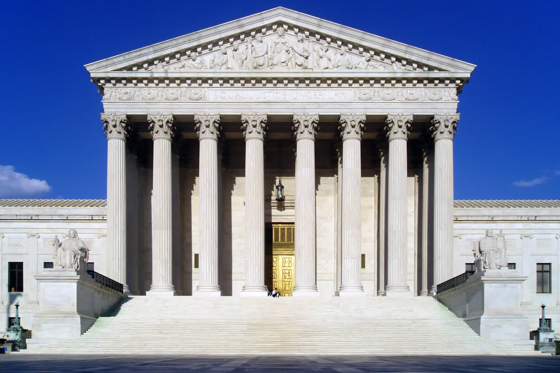
Part of President Trump’s travel ban will go into effect after the Supreme Court announced on Monday that it would decide in October whether it is lawful.
To address gaps in the government’s screening and vetting procedures, Trump’s revised executive order limited travel from six mostly Muslim countries for 90 days and suspended the nation’s refugee program for 120 days. Two federal appeals courts have previously blocked critical parts of the order.
The administration had asked that the lower court ruling be stayed while the case moved forward. The court granted part of that request in its unsigned opinion.
The court, in effect, said that foreigners with ties or relationships in the United States would not be prohibited from entering the country. But, those applying for visas who had never been here, or had no family, business or other ties could be prohibited.
“We grant the government’s applications to stay the injunctions, to the extent the injunctions prevent enforcement” of Mr. Trump’s executive order “with respect to foreign nationals who lack any bona fide relationship with a person or entity in the United States.”
The court said the distinction should be easy to administer. “In practical terms, this means that” the executive order “may not be enforced against foreign nationals who have a credible claim of a bona fide relationship with a person or entity in the United States.”
Justice Clarence Thomas, joined by Justices Samuel Alito Jr. and Neil Gorsuch, dissented from part of the court’s opinion. They said they would have revived the travel ban in its entirety while the court considered the case.
“I fear that the court’s remedy will prove unworkable,” Justice Thomas wrote. “Today’s compromise will burden executive officials with the task of deciding — on peril of contempt — whether individuals from the six affected nations who wish to enter the United States have a sufficient connection to a person or entity in this country.”
Quoting from the majority opinion, Justice Thomas further wrote, “The compromise also will invite a flood of litigation until this case is finally resolved on the merits, as parties and courts struggle to determine what exactly constitutes a ‘bona fide relationship,’ who precisely has a ‘credible claim’ to that relationship, and whether the claimed relationship was formed ‘simply to avoid’ the executive order.”
The court agreed to review both cases and said it would hear arguments in October. It also suggested that the administration could complete its internal reviews over the summer, raising the prospect that the case could be moot by the time it was argued.

